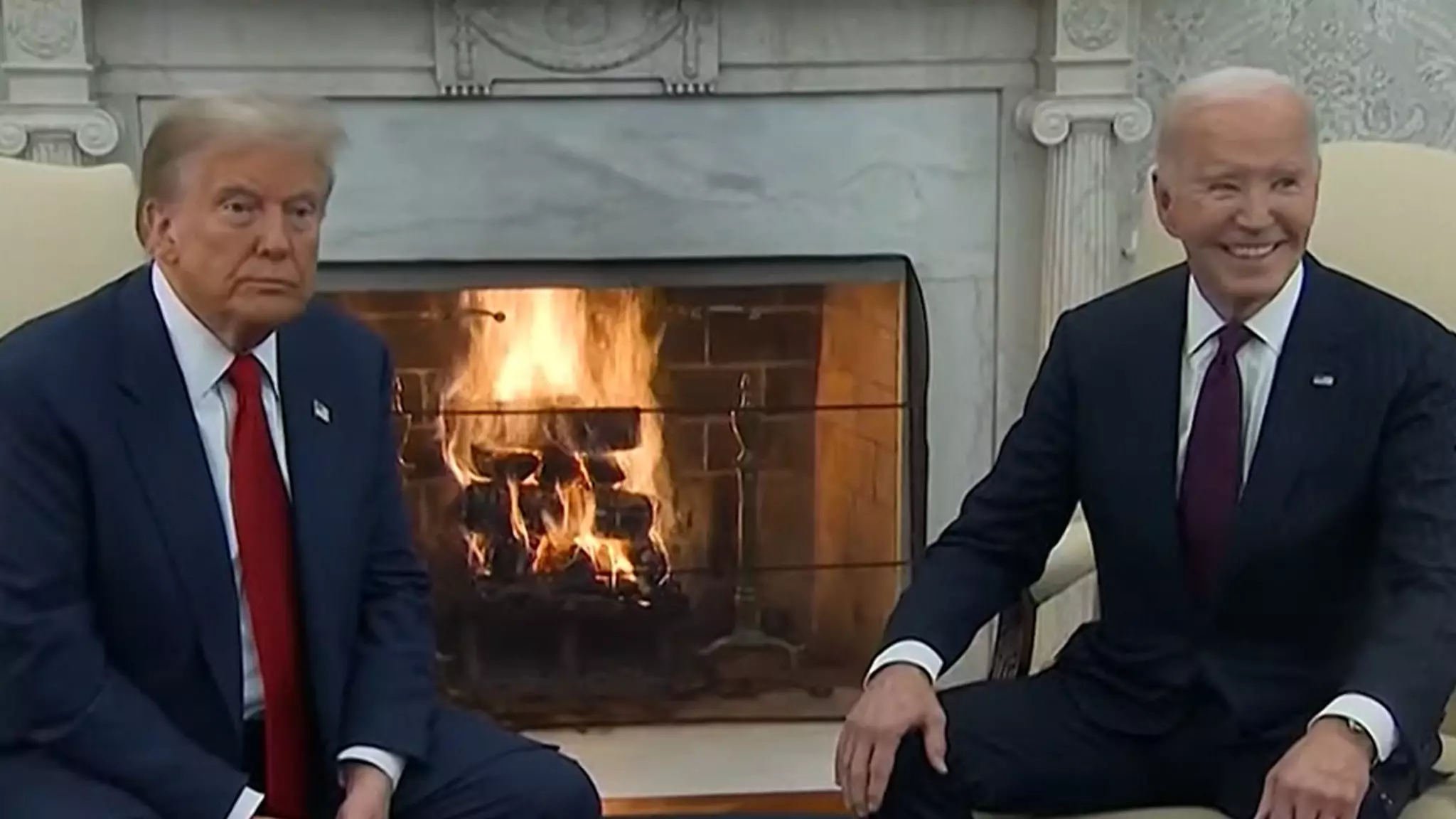In a politically charged atmosphere, the meeting between President-Elect Donald Trump and incumbent President Joe Biden drew significant media attention as they assembled in the Oval Office to discuss the transition of power. Traditionally, this meeting is designed to foster collaboration between the outgoing and incoming administrations, aiming to facilitate a seamless transfer of authority. While the backdrop of friendly smiles and poised bodies suggested a peaceful conversation, the history of hostility between the two leaders was palpable, serving as a reminder of the turbulent political climate they each embody.
The significance of this meeting cannot be understated, considering the contentious relationship developed over the past few years, particularly surrounding the legitimacy of the 2020 election. Trump’s unwillingness to acknowledge Biden’s victory marked a unique departure from the gentle handovers of the past. The juxtaposition of Biden’s respectful invitation and Trump’s earlier remarks encapsulates the complexities of American political interactions. Symbolically, Trump’s thanks to Biden for a “smooth transition” serves as both an olive branch and a veneer over the discord that has characterized their interactions—a potent reminder of how far political discourse has fallen from grace.
Adding another layer to this narrative were the absentees of each leader’s spouse. The absence of Melania Trump during the meeting alongside Jill Biden underscores the fragmentation within these political families. Melania’s pointed criticisms of the Biden administration, particularly surrounding the FBI raid on Mar-a-Lago, reflect a broader context of tension and distrust that extends beyond just the two prominent figures. This absence could be interpreted not only as a personal affront but as a signal of the underlying political grievances that permeate their lives.
As Trump prepares to take office, national concerns arise particularly in the wake of the controversial events of January 6, 2021. The discussions surrounding the peaceful transfer of power emphasize the ongoing necessity to address potential threats to democracy. Likewise, Trump’s quick move toward establishing a Cabinet, including the creation of a new department focused on government efficiency, suggests that he intends to prioritize organizational changes promptly to bolster the effectiveness of his administration. The choice of figures like Elon Musk highlights a blend of technology and governance that may redefine operational standards in U.S. politics.
This meeting is more than just a routine get-together; it is a symbolic turning point that reflects the dynamic and often volatile nature of American democracy. The contrasting styles and philosophies of Trump and Biden not only influence their interactions but underscore a larger debate about the future of American governance. Trump’s election represents a continuation of an outsider approach to politics, while Biden’s presidency embodies a call for unity and traditional governance. As both leaders navigate various issues—ranging from healthcare to foreign policy—their ability to collaborate will ultimately impact the direction of the nation in the coming years.

